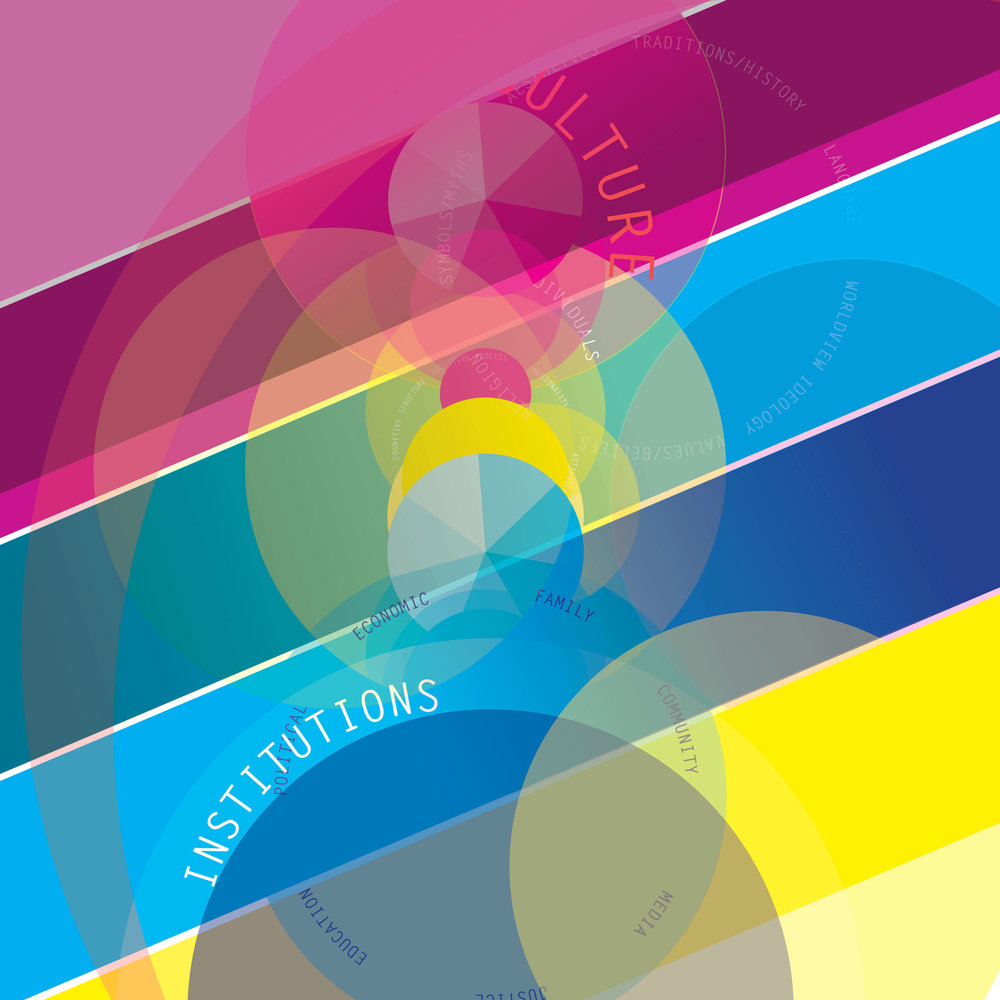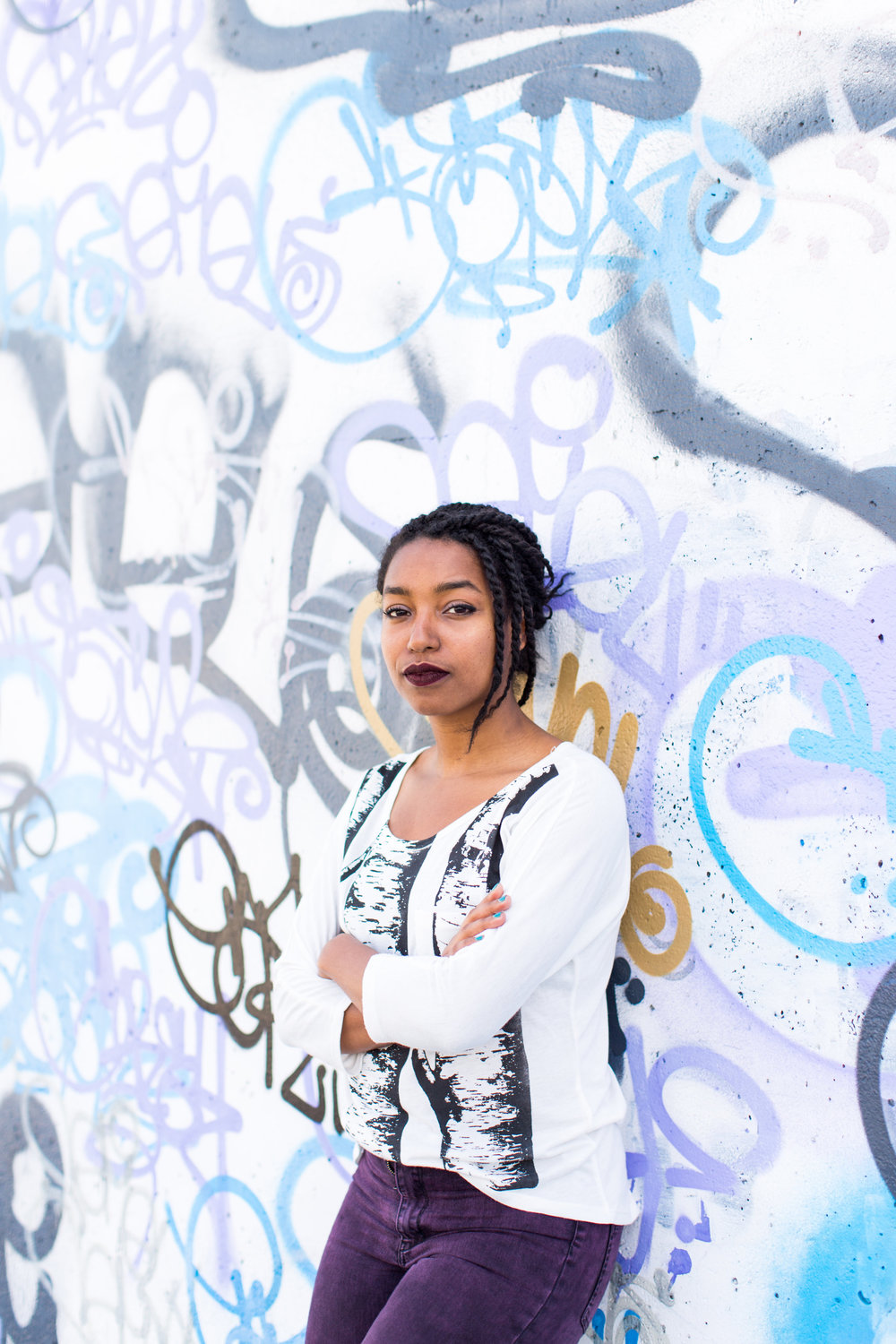
By: Theresa Christine
The way we consume information is changing at a rapid pace. As a kid, you went to the library and flipped through encyclopedias for a research paper. Then the internet put even more information within grasp. Now, videos from around the world are right in the palm of your hand, literally.
But because we are bombarded with information daily, it often means we tune things out. So how can designers clear out the mess and actually reach people with their work?
Jessica Bellamy knows this struggle all too well. After fighting to have her work heard, the Adobe Creative Resident and Designer sought a more effective way to share information.
“As a college student who was constantly writing long papers on topics that intersected with race, I understood that no matter how well-written my papers were they were still going to go unread,” she said. “I wanted to find new avenues to have meaningful and transformative conversations about race, so I started making some of my papers into infographics.”

Jessica developed a way to harness information to tell visual and personalized stories, especially when it comes to ethnomathematics—the relationships between culture and data. It’s not merely about using charts or graphs, though. “People appreciate a visual narrative rather than just a data visualization; however, from a design perspective, beauty should never be the only goal,” she stated. “Aesthetics should never be placed above function. Data can be made less intimidating by incorporating allegorical illustrations that speak to the issue.”
While some creatives may shy away from numbers, she insists it’s an integral part of design. Graphic designers use the golden ratio when creating layouts, and architecture and product design couldn’t exist without data.
Jessica also highlighted the crucial role math plays in the industry. “Its role is to be accurate and well-researched,” she explained. “It also must be accountable to the negative or positive effect of the design narrative.”

Naturally, as an infographic designer, Jessica loves complex problem solving and system design. This led her to create the infographic wheel, a tool which would allow people to create more effective infographics—what she called her most exciting and challenging project to date.
“To create the infographic wheel I had to do weeks of research and experimentation,” she said. She read through several books and referred to multiple web portfolios, compiling a master list of ways to create this type of visual experience. “Once I had a list of 113 infographic layouts I started categorizing them based on use. I also began to identify the types of data that typically were associated with each of those layouts.”
The result? A wheel which features a refined list of 36 essential, familiar layouts to use when creating an infographic.
Social change drives her work, which helps topics like race become a part of the conversation—a conversation which engages people, one they’ll actually pay attention to. Jessica even started her own video series, Designing from the Margins, about the intersections between men and women of color and design. “I’m hoping to find as many Creative ways to both inspire conversations around race as well as instill pride in Black people,” she said. “The content that I’ve created acts as a mechanism for reconciliation and healing, which is a result that I’ve not always had the opportunity to work towards with design.”

It might be a slow process, but it’s important to continue breaking down the barriers and highlighting the work of people of color. “When we start to recognize the many contributions of Black and Brown people,” Jessica mentioned, “we begin to dismantle our internal bias that limits whose faces we show in our designs, whose perspective is explored in our work, and whose voice is heard through our projects.”
This work is invaluable, especially when it’s no secret the design industry isn’t exactly the most welcoming for people of color or women. Jessica’s advice to them? “Collect mentors, eat as much media as you can, and get past your self-doubts by finding your ‘why,’” she advised. “You are limitless.”

Theresa Christine
Theresa entered the world of design through The Dieline. With a background in writing and journalism, she has a passion for discovery and cultivating human connections. Her work for The Dieline is a constant journey to deeply understand all facets of the design process and to investigate what makes designers tick. Theresa’s writing has taken her snorkeling in between the tectonic plates in Iceland, horseback riding through a rural Brazilian town, and riding an octopus art car at Burning Man with Susan Sarandon as part of a funeral procession for Timothy Leary (long story). When not writing, she is planning her next trip or taking too many pictures of her cat.
No comments:
Post a Comment